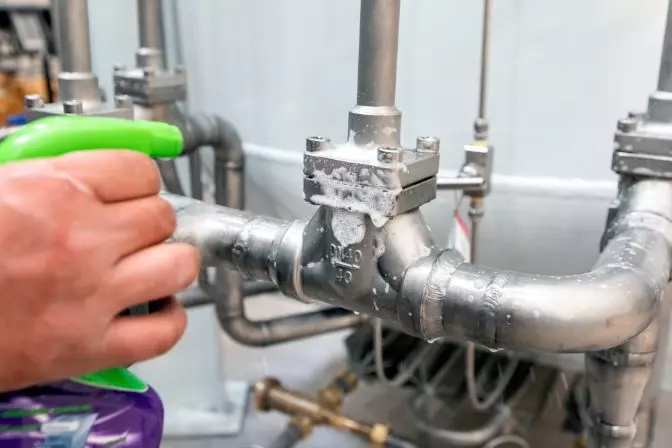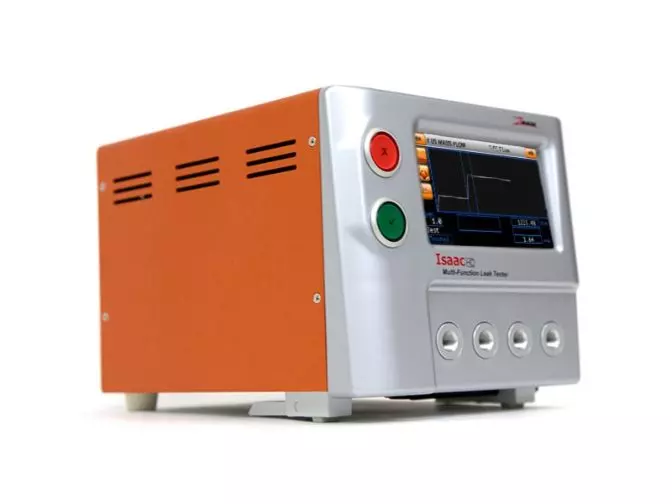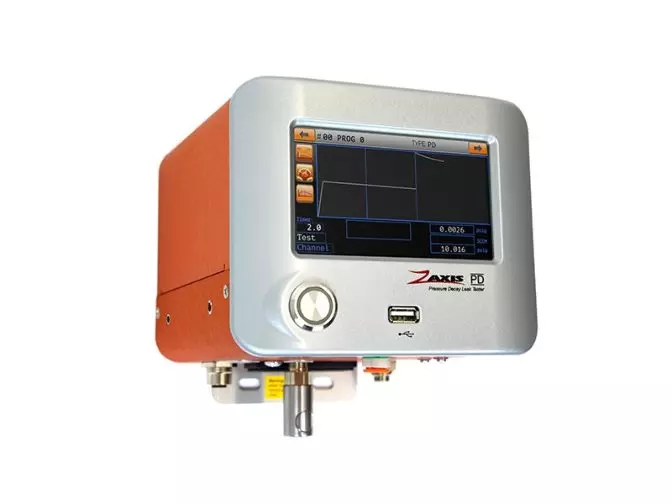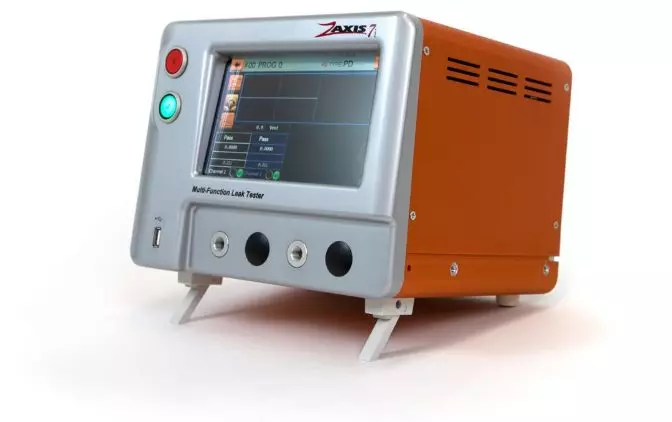Jiangsu Bailite Transmission Technology Co., Ltd , https://www.zsindustrialbelt.com
# Leak Testing: A Comprehensive Guide
Leak testing is a critical inspection procedure used to determine if an object or system is operating within a specified leak limit. Inspectors rely on this method to identify any defects, such as cracks, holes, or flaws, that could cause liquids or gases to escape from the object.
Leaks occur due to structural imperfections in an object, allowing the contained fluid to escape. Leak testing involves applying pressure to the object to locate these defects so they can be repaired during routine maintenance. This method is particularly valuable for objects that store or transport liquids and gases.
In general, leak tests are applied to containers, pipelines, and systems that handle fluids. The image below illustrates a typical setup used in leak testing.

Leak testing is one of the most frequently used non-destructive testing (NDT) methods. Unlike destructive testing, leak testing does not permanently alter or damage the inspected object, making it a safe and efficient option for quality assurance.
To learn more about NDT methods, check out this [in-depth guide](insert link here).
## What is Leak Testing?
Leak testing involves applying pressure to an object to detect defects causing leaks. Fluids naturally flow from areas of high pressure to low pressure, and leak testing exploits this principle by introducing pressure to force fluid toward potential leaks. Inspectors then carefully monitor this flow to pinpoint the source of the leak.
Leak testing is primarily conducted on closed systems to verify their integrity. The success of a leak test often depends on the object's material and structure. Different materials react differently to the pressures used in leak testing, so careful consideration is required to avoid damaging the object.
## Industries Utilizing Leak Testing
Several industries rely heavily on leak testing to ensure product quality and safety:
- **Automotive**: Ensures components like fuel tanks and brake lines are leak-free.
- **Consumer Goods**: Verifies packaging integrity for food and beverage products.
- **Medical Devices**: Guarantees the safety and reliability of devices like syringes and catheters.
- **Packaging**: Confirms the seal integrity of containers and bottles.
- **Sealed Electronics**: Protects sensitive electronics from moisture and contaminants.
## Technological Advancements in Leak Testing
Recent technological innovations have significantly enhanced the sensitivity and accuracy of leak testing. Advances in sensors, microprocessors, and connectivity have made leak testing faster and more precise. One of the most significant developments has been the integration of IoT technology, enabling remote data collection and analysis. This capability allows inspectors to receive real-time feedback, improving maintenance efficiency.
## Common Leak Testing Methods
Here are some of the most widely used leak testing techniques:
- **Burst Testing**: Applies increasing pressure until the object fails, identifying the maximum load it can withstand.
- **Chamber Testing**: Used for sealed environments without direct access points for pressure application.
- **Pressure Crack Testing**: Detects minor leaks or "weeping" in valves using downstream sensors.
- **Pressure/Vacuum Testing**: Compares the pressure change between the object and a reference volume to identify leaks.
- **Pressure Decay Testing**: Measures the decrease in pressure over time to detect leaks.
- **Vacuum Decay Testing**: Uses negative pressure to identify leaks in systems.
- **Occlusion Testing**: Identifies obstructions in fluid pathways to locate leaks.
The typical pressure limit for leak tests is relatively low, often set at 15 psi or 25% of the design pressure, whichever is lower.
## Key Considerations in Leak Testing
Performing a leak test requires careful planning, taking into account several critical factors:
### Acceptable Leak Rate
Understanding the acceptable leak rate is essential for effective leak testing. Not all leaks require immediate intervention; some may only necessitate monitoring. Industry-specific guidelines often provide acceptable leak rates for different products and substances.
### Manufacturing Considerations
The intended use of a system, part, or object influences its design. For instance, a car part might be designed to prevent gas leaks, while an IV bag is designed to contain liquids. Understanding the purpose helps inspectors tailor their approach.
### Material Considerations
The material of the object plays a crucial role in leak testing. Brittle or malleable materials respond differently to pressure, affecting the outcome of the test. Inspectors must consider these properties when planning the test.
### Medium Considerations
The substance the object is designed to hold must also be considered. Different substances have varying molecular sizes, influencing the acceptable defect size. Additionally, the pressure range used must be appropriate to avoid damaging the object or yielding inconclusive results.
## Leak Testing Equipment
Various specialized equipment is used for different leak testing methods. Here are some examples:
### Air Leak Inspection Devices
These devices feature displays that show real-time data during leak tests. They support multiple methods, including vacuum decay, pressure decay, and burst testing.

### Compact Pressure Decay Leak Tester
Designed for proximity to fixtures, these testers reduce connection volume, speeding up tests and enhancing sensitivity.

### Large Display Leak Tester
Equipped with larger screens and increased internal capacity, these testers offer faster and more comprehensive testing capabilities.

### Leak Standards
Used to calibrate leak tests, these standards simulate leaks in objects under test or compare multiple leak systems.

## Leak Testing Standards and Codes
Leak testing is governed by various international standards, ensuring consistency and reliability across industries. Some widely recognized standards include:
### ASME (American Society of Mechanical Engineers)
- ASME B31.3: Pressure Testing and Leak Testing Requirements for Process Piping
### ASTM (American Society for Testing and Materials)
- ASTM E432-91(2017)e1: Standard Guide for Selection of a Leak Testing Method
- ASTM E493 / E493M - 11(2017): Standard Practice for Leaks Using the Mass Spectrometer Leak Detector in the Inside-Out Testing Mode
- ASTM E499 / E499M - 11(2017): Standard Practice for Leaks Using the Mass Spectrometer Leak Detector in the Detector Probe Mode
- ASTM E1003 - 13(2018): Standard Practice for Hydrostatic Leak Testing
- ASTM A1047 / A1047M - 05(2019): Standard Test Method for Pneumatic Leak Testing of Tubing
- ASTM E1603/E1603M-11(2017) Standard Practice for Leakage Measurement Using the Mass Spectrometer Leak Detector or Residual Gas Analyzer in the Hood Mode
- ASTM F2164 - 21: Standard Practice for Field Leak Testing of Polyethylene (PE) and Crosslinked Polyethylene (PEX) Pressure Piping Systems Using Hydrostatic Pressure
- ASTM F2786 - 16(2021): Standard Practice for Field Leak Testing of Polyethylene (PE) Pressure Piping Systems Using Gaseous Testing Media Under Pressure (Pneumatic Leak Testing)
- ASTM E2930 - 13(2021): Standard Practice for Pressure Decay Leak Test Method
- ASTM WK76995: New Practice for Field Leak Testing of Polyamide-12 (PA12) Pressure Piping Systems Using Gaseous Testing Media Under Pressure (Pneumatic Leak Testing)
### ISO (International Organization for Standardization)
- ISO 20484:2017(en): Non-destructive testing — Leak testing — Vocabulary
- ISO 20485:2017(en): Non-destructive testing — Leak testing — Tracer gas method
- ISO 20486:2017(en): Non-destructive testing — Leak testing — Calibration of reference leaks for gases
- ISO 27895:2009(en): Vacuum technology — Valves — Leak test
These standards ensure that leak testing is performed consistently and effectively, providing reliable results across different applications and industries.